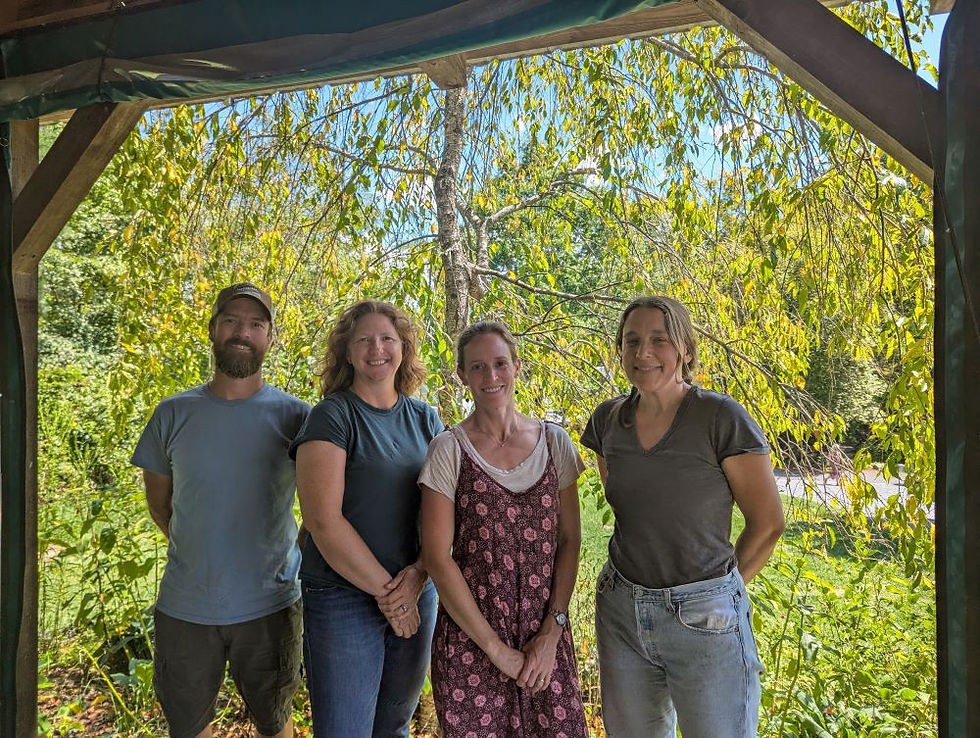Strong Rails, Safe Trails
- Emily Kohl
- Sep 25, 2024
- 2 min read
Updated: Sep 27, 2024

Boxerwood’s 15-acre garden and outdoor education space has been getting some safety and accessibility upgrades by our amazing garden staff and contractors. Many of the materials we use here come from the property itself, like tree limbs for railings, gates, and fences. We enjoy using natural items that blend seamlessly with our woodland garden and leave a small carbon footprint.
Recently, these materials have been put to good use in our work stabilizing and rebuilding parts of the zig zag bridge in the wetland area.
The zig zag bridge is more than a path over the marshy and sensitive wetland soils. It is designed to create a sense of mindfulness as one traverses the sharp angles of the path, giving visitors a chance to slow down and enjoy views of the wetland and the plants and animals in their habitat.
The Big Chair in the field has also received some TLC to make it more stable, ensuring for years to come that people can enjoy it and take photos with the beautiful Blue Ridge as a backdrop. This structure, like several others in the garden, were constructed from the mind of Jay Sullivan, an engineering professor at VMI and spouse to our Early Education Coordinator, Jess Sullivan. He was the creative mind behind not only the chair, but the building in the fairy forest, the metal turtle in the field, all of the parade floats, and many other curiosities.
The garden team has also been attending to Boxerwood trails. Paths around the garden become muddy and compacted when many feet walk in the same place. The team uses wood chips and now biochar to help keep the paths from eroding. The biochar is made from carbon-based plant material that has been burned with little to no oxygen over a long period of time. It’s similar to naturally made charcoal, but when mixed with compost and added in the soil, it can help reduce compaction and increase soil productivity by creating more tiny air spaces and promoting microbial activity. This revitalization is beneficial not only for paths, but around trees and plants that become stressed from compacted soil and its low fertility. Biochar is also a natural carbon sink, binding the carbon in the soil where it does not break down and eventually return to the atmosphere. We are excited to use this innovative material for more projects.
“We strive to provide a safe and multi-sensory experience for our visitors of all ages,” remarked Karen Stanley, Garden and Volunteer Coordinator. “Students that come for school field programs remember the laughter and learning they get here. And families and visitors love our unique and homegrown gardens and forests.” Part of what keeps Boxerwood going are visitor donations. These donations, in turn, help us maintain our special property and facilities.
Next time you visit, be sure to discover all the bridges, gates, signposts, Play Trail structures, and art pieces created with natural items from the garden itself!


